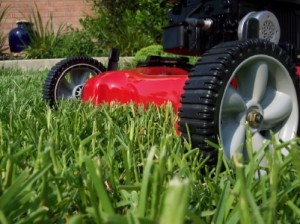
Soil readiness.
Indoors
- Prune, repot and clean houseplants as needed.
- Fertilize houseplants as new growth appears. Follow label directions.
- Sketch garden plans, including what to grow, spacing, arrangement, number of plants needed and sequence.
- Order seeds and plants as early as possible for best selection.
- Place Easter lily, florist azalea, cyclamen and other seasonal flowering plants in bright, indirect sunlight. Keep soil moist.
- Pot up summer flowering bulbs to be transplanted outdoors later, including tuberous begonias, caladiums and cannas.
- Start seeds of warm season vegetables and flowers in early March in southern Indiana. In northern and central Indiana, wait until late March or early April. Transplant outdoors when danger of frost is past, usually mid-May.
General Landscape
- Warm spring days tempt us into the garden to prepare the soil and begin planting. However, do not work the soil if it is wet. If soil is worked too early, its structure is damaged. Here’s an easy test: Take a handful of soil. If it crumbles in your hand, the soil is ready to work. If it forms a ball, the soil is too wet.

Prepare tools for their summer job. Sharpen mower blades.
Prepare lawn and garden equipment for upcoming growing season. Sharpen blades and have equipment serviced as early as possible.
- Prune trees and shrubs except those that bloom early in spring.
- Plant container grown and balled-and-burlapped trees and shrubs as soon as the soil dries enough to be worked. Plant bare-root plants before they leaf out.
- Fertilize woody plants before new growth begins but after soil temperatures have reached 40 degrees, usually early March in southern Indiana and late March in the north.
- Apply horticulture oil spray, if needed, to control scale insects and mites when tips of leaves start to protrude from buds.
- Avoid walking on soft ground. Walking on soil compacts it.
- Seed bare spots in lawn.
- Apply corn gluten, a natural pre-emergent herbicide, when grass starts active growth in southern Indiana only. Wait until April in the north . Corn gluten keeps weed seeds from sprouting but does not kill existing plants. For more info: University of Minnesota’s Corn Gluten Meal: A Natural Pre-Emergence Herbicide.
- Remove leaves, twigs and trash from yard.
- Set lawn mower to cut at 3 ½ to 4-inches high.
- Cut to the ground perennials that were left standing for winter interest. Divide and transplant perennials when soil can be worked.
- Cut ornamental grasses as close to the ground as possible. Transplant or divide ornamental grasses.
- Remove winter covering from roses as soon as new growth begins. Prune and fertilize as needed.
- Sow seed or plant seedlings of cool-season and half-hardy annuals, including calendula, larkspur, poppy, snapdragons, English daisy, pansies and sunflowers.
- Harden off transplants by setting them outdoors during the day for about a week before planting.
- Follow last fall’s soil test recommendations for fertilizer and pH; soil also can be tested this spring.
Vegetables and Fruits
- Plant seedlings of cool season vegetables and flowers as soon as the soil is dry enough to work. These include broccoli, cabbage, Brussels sprouts, peas, spinach, lettuces, radishes and beets. For more details on specific vegetables and planting dates, see Purdue University’s Home Gardener’s Guide.
- Remove old asparagus and rhubarb tops; side dress with nitrogen or manure.
- Plant or transplant asparagus, rhubarb and small fruit plants.
- Remove winter mulch from strawberry beds as soon as new growth begins; keep mulch nearby to protect against frost and freezes.
- Before new growth begins on raspberry plants, remove canes that fruited last year and any that are weak, diseased or damaged.
- Prune grape vines to remove dead or weakened limbs. Repair trellises as needed.
